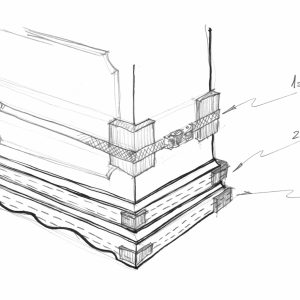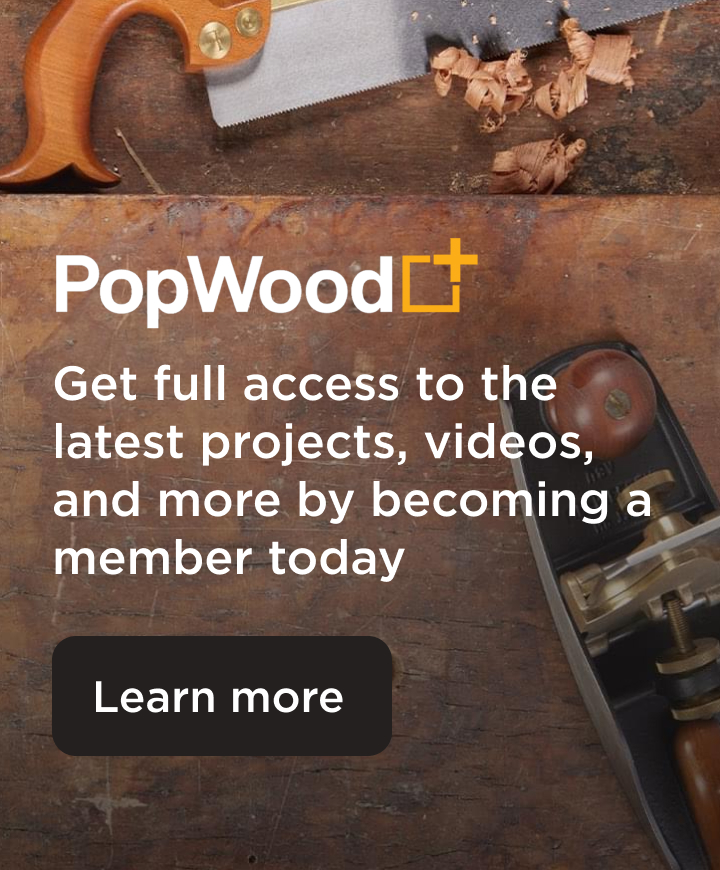We may receive a commission when you use our affiliate links. However, this does not impact our recommendations.
In April I taught a weeklong class at the Kansas City Woodworkers’ Guild. Everything I’d read and heard about the organization had left me with high expectations. As it turned out, my high expectations weren’t high enough.

Guild members who took my class, with one of the nearly finished desks. Left to right: Sharon Pugh, Dave Kraatz, recently retired Director of Training, Robert Fenn (kneeling), Kirk Wanless, Barb Hinton, Marseille Bredemeyer, Oliver Clark, Miranda Clark, Gary Mielke, Treasurer, yours truly (in a rather unflattering t shirt), Andrew Carr, Rick Chandler (hiding behind Andrew), Craig Alexander,. Craig Arnold, newly elected President, and Larry Thies, whose desk is on display here.
Sure, I’d heard about the 10,000 square foot shop and was dimly cognizant that the place had existed for a long time, though I didn’t yet know just how long. That in itself is impressive, as social organizations go. I’d also heard they had some highly skilled members, such as Les Hastings. Add to this the extraordinarily affordable membership fee—$75 a year—and your eyes may pop, as mine did. But there’s nothing like spending a week or more teaching in a place to make you really appreciate what such bragging rights really entail (not that anyone at the Guild is bragging; they’re a modest lot). What makes this organization truly impressive is not the space or the tools, but the people who keep it going.
Consider the following couple of entries from the website.
“There is no cleaning service at the shop. Cleanliness is a cooperative venture. You are uncomfortable with the state of the rest room? We can show you where the cleaning supplies are. There are 365 days of the year. There are about 700 members. If you take a turn once every two years, it should work out.”
“Guild dues are low in order to promote the craft of woodworking. One of the ways we keep the membership rates low is that members frequently donate consumables. Apparently a fair amount of glue comes in from this member or that. If you use some equipment, e.g., the 37” sander, a donation is encouraged to help pay for the expensive sanding loops it uses. You might find other ways to help out.”
These two excerpts get directly to the reality of running a community workshop. Many people dream about starting a community shop, and some bring that dream to life. But keeping a community shop going over the long term, not to mention growing the membership and changing in response to members’ ideas, takes prodigious energy and finely tuned organization. Here’s a glimpse into how the Kansas City Woodworkers’ Guild has pulled it off.
***
The Guild was formed in 1984 with 25-30 members, about half of them professional, the others serious hobbyists. “The initial group did not envision much beyond a monthly information and techniques exchange,” says Dave Kraatz, a member since the Guild’s inception and the recently retired Director of Training. Fellowship with like-minded people was a main emphasis in the early days. Everyone had his or her own shop, so there was no great interest in a Guild-sponsored community shop.
Back in those days, the group’s organization was relatively informal, but as the percentage of less-experienced woodworkers increased, things had to change. The Guild incorporated as a 501 C-3 nonprofit in 1992, electing officers and complying with all the legal and financial requirements that this form of nonprofit entails. “The organization format was largely drafted by interested professionals other than woodworkers,” Kraatz wrote in response to my questions. “The leadership practices were the result of the experience of engineers, lawyers, IT professionals, electricians, plumbers, factory managers, printers, various business owners, school shop teachers and you name it. Our collective experience was that nothing happens unless someone is in charge. Many of us have had the responsibility of managing and directing very large projects in or careers.”
“For me personally,” he continued, “I would have no interest in the Guild if we had any less organization because it would be unmanageable.” (Reader, let that sink in. 700 people + lots of machines, not to mention bills to pay for rent, insurance [translation: $$$$], utilities, legal fees, and so forth.) “We all contribute to our personal interests and I volunteer because I like woodworking and I like teaching. I like seeing people learn new skills and techniques.” (I can attest to this. Kraatz spent the entire week with the class, helping out in any way he could [including pulling my leg; I swear I’m an inch taller as a result] and produced some state of the art jigs for shaping parts of the desk the students built.)
Membership grew, though it remained between 70 and 100 for the first 23 years. The growing number of non-professionals without their own facilities also resulted in the dream of a shared shop. Several longstanding members raised funds by getting a contract to build traditional Swiss wooden furniture for a local restaurant that an acquaintance planned to open, and the Guild opened its first shared shop in 2007.
The prospect of having access to a well-equipped shop at such an affordable membership fee proved a powerful draw; most of the Guild’s membership growth has occurred in the 20 years since. Dedicated members continue to raise money for the Guild by contracting with businesses to build presentation boxes for samples of synthetic turf, wine, and other products.
The Guild publishes a schedule indicating the hours each day when shop use will be limited—for example, when a class is underway—and open shop time, when it will be available for any member to use.
About 10% of the members (newly elected President, Craig Arnold, points out that even though this percentage may sound low, it translates to a whopping 70 people) do the heavy lifting—serious clean up, prepping the space for meetings, buying coffee, filters, and other supplies, noticing when there’s a plumbing problem and calling the plumbers, then arranging to meet them, and so on. Other members are free to come in for an hour or so to work on their projects, then leave.
The Director of Assets, Chuck Saunders, maintains and repairs the Guild’s machinery, in addition to taking care of wiring. He also recruits and enlists shop forepersons, who are responsible for running the shop during open shop times. Most are very experienced and capable of setting up and using the machinery. While there is no formal list of requirements to become a shop foreperson, Saunders notes that the position calls for good woodworking knowledge, an eye toward safety, a willingness to help others, and the assertiveness to step in and stop members from harming themselves or equipment. Forepersons need to work a minimum of one 3-hour shift per month; those new to the position learn by shadowing those with experience. They offer technical assistance to anyone working in the shop–an invaluable benefit; if they can’t answer a particular question, they’ll refer members to someone who can. The Guild also has special interest groups, or SIGS, for detailed guidance in areas such as CNC use or carving.
What else might account for the Guild’s success? Saunders credits the lack of competition among members. “We are not driven by awards and prizes and recognize that we are all on the woodworking proficiency spectrum,” he wrote. “Seeing growth in others’ abilities is celebrated over who is the best of the best.” He adds: “I find this is not common among craft organizations.”
– Nancy Hiller
You can learn more at http://kcwoodworkersguild.org/about/videos.
 English Arts & Crafts Furniture explores the Arts & Crafts movement with a unique focus on English designers. Through examination of details, techniques, and historical context, as well as projects, you’ll discover what sets these designers and their work apart from those that came before and after, as well as gain a deeper understanding of the Arts & Crafts movement and its influence.
English Arts & Crafts Furniture explores the Arts & Crafts movement with a unique focus on English designers. Through examination of details, techniques, and historical context, as well as projects, you’ll discover what sets these designers and their work apart from those that came before and after, as well as gain a deeper understanding of the Arts & Crafts movement and its influence.
Here are some supplies and tools we find essential in our everyday work around the shop. We may receive a commission from sales referred by our links; however, we have carefully selected these products for their usefulness and quality.

















